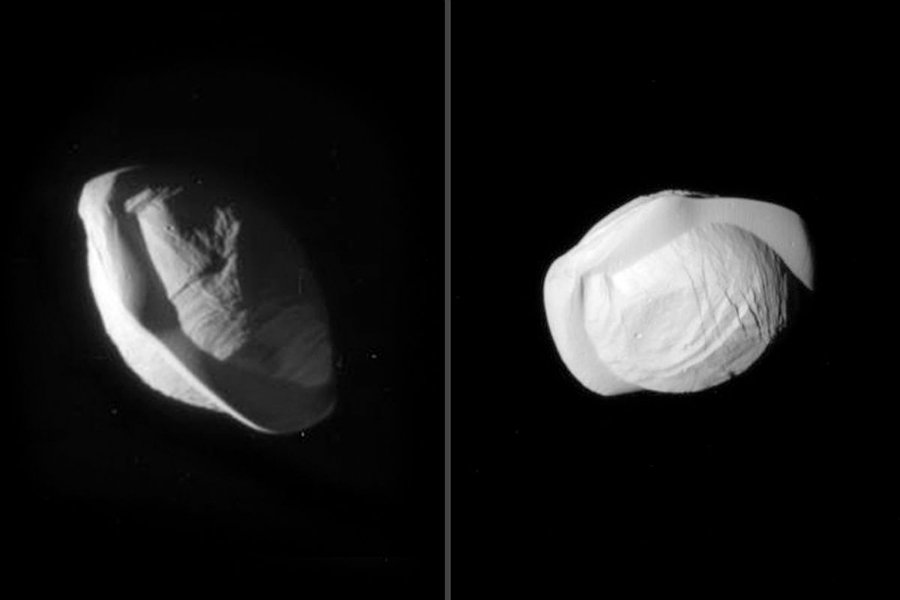The Cassini spacecraft took pictures of Pan, one of the moons of Saturn. The spacecraft had a close approach distance of 24,572 kilometers (15,268 miles), and thanks to the new pictures scientist will be able to characterize its shape and geology, according to NASA. The pictures have caused a lot of buzz amongst the scientific community due to the moon’s odd shape. Astronomers have said it looks like a flying saucer, a fried egg, a walnut, and even a ravioli.
Pan is the second innermost of Saturn’s known moons, and it has a mean radius of 8.8 miles (14.1 km) and orbits 83,000 miles (134,000 kilometers) away from Saturn, within the Encke Gap of Saturn’s A-ring. Pan is known to be a ring shepherd, which consists in a small natural satellite that clears a gap in planetary ring material or keeps particles within a ring contained. Due to their gravitational effect, they pick up particles and deflect them from their original orbits through orbital resonance.

Much like Atlas, another Saturn’s moon, the natural satellite has a considerable equatorial ridge, which gives it its distinctive flying saucer-ravioli-walnut appearance. Pan was first discovered in 1990 after it was predicted in 1985 by scientists Jeffrey N. Cuzzi and Jeffrey D. Scargle that a satellite or moon orbited around the Encke Gap, based on the wavy edges of the gap that indicated a gravitational disturbance. Later on, other scientists inferred its orbit and mass, and finally, in 1990, it was discovered by Mark R. Showalter when he was analyzing old Voyager 2 probe photos. Pan received its name in 1991 after mythological Pan, who was the god of shepherds, among other things.
The ‘shepherd’ moon
Thanks to the pictures taken by the Cassini probe, scientists have some hypothesis regarding the satellite’s unique physique. They believe Pan was once part of a larger satellite that broke up near Saturn a long time ago. Most of the material resulting from the “break up” was flattened and it created Saturn’s rings, while Pan and Atlas orbited within or near the rings, sweeping up ring particles about their middles. The ridges are about as thick as the vertical distances each satellite travels in its orbit about the planet.

Pan currently orbits around the Encke Gap, while Atlas orbits just outside the A-ring. Both satellites help clean out debris from the Encke Gap – in Pan’s case – and the A-ring – Atlas’ job – which contributes to create and shape the narrow ringlets that appear on the gap. Moons embedded are known to have several effects on the environment they orbit, and clearing cosmic debris adds up to creating ringlets, and raising vertical waves of material that rise above and below the ring plane. All those effects are possible thanks to gravity, that can give small objects like Pan dominion over vast regions. The Cassini probe pictures will give astronomers an opportunity to learn more about the weird-shaped moon.
Source: Universe Today
